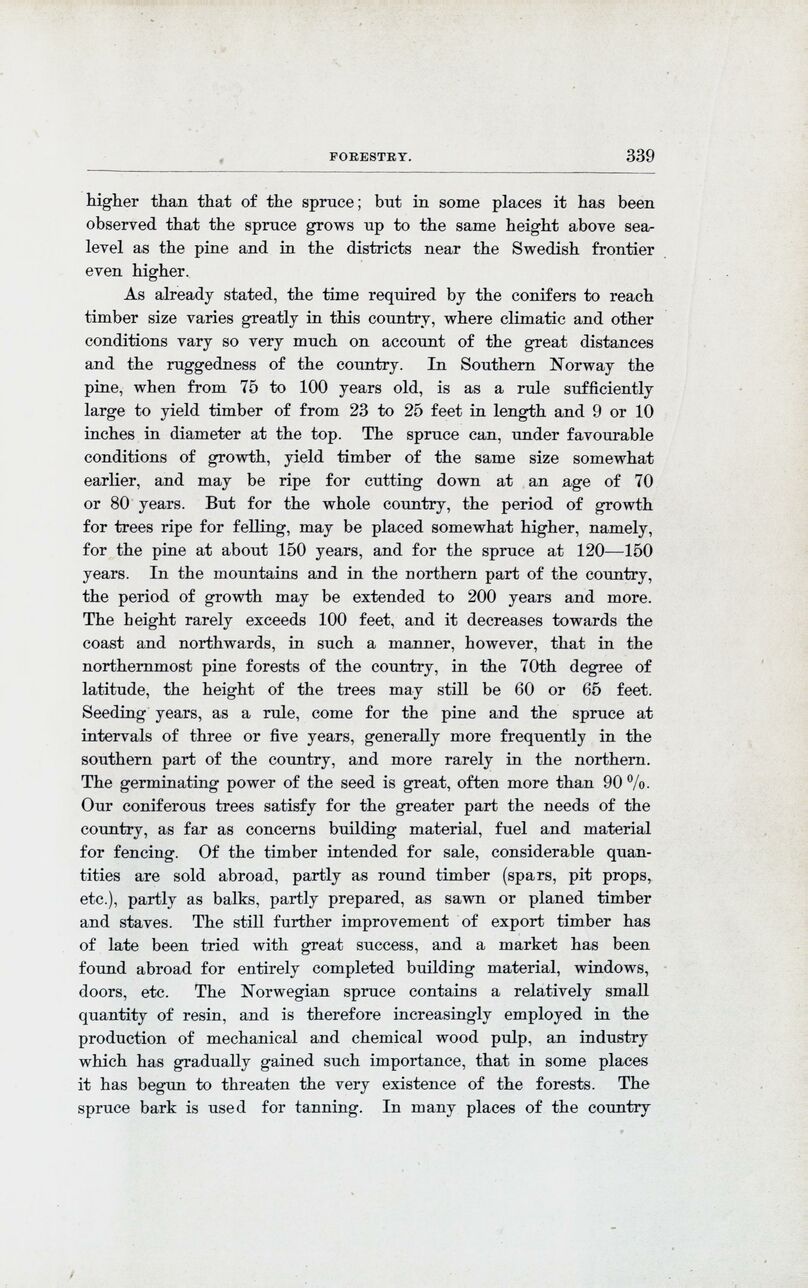
Full resolution (JPEG) - On this page / på denna sida - Forestry, by K. A. Fauchald

<< prev. page << föreg. sida << >> nästa sida >> next page >>
Below is the raw OCR text
from the above scanned image.
Do you see an error? Proofread the page now!
Här nedan syns maskintolkade texten från faksimilbilden ovan.
Ser du något fel? Korrekturläs sidan nu!
This page has been proofread at least once.
(diff)
(history)
Denna sida har korrekturlästs minst en gång.
(skillnad)
(historik)
higher than that of the spruce; but in some places it has been
observed that the spruce grows up to the same height above
sea-level [[** sjk bindestrek]] as the pine and in the districts near the Swedish frontier
even higher.
As already stated, the time required by the conifers to reach
timber size varies greatly in this country, where climatic and other
conditions vary so very much on account of the great distances
and the ruggedness of the country. In Southern Norway the
pine, when from 75 to 100 years old, is as a rule sufficiently
large to yield timber of from 23 to 25 feet in length and 9 or 10
inches in diameter at the top. The spruce can, under favourable
conditions of growth, yield timber of the same size somewhat
earlier, and may be ripe for cutting down at an age of 70
or 80 years. But for the whole country, the period of growth
for trees ripe for felling, may be placed somewhat higher, namely,
for the pine at about 150 years, and for the spruce at 120—150
years. In the mountains and in the northern part of the country,
the period of growth may be extended to 200 years and more.
The height rarely exceeds 100 feet, and it decreases towards the
coast and northwards, in such a manner, however, that in the
northernmost pine forests of the country, in the 70th degree of
latitude, the height of the trees may still be 60 or 65 feet.
Seeding years, as a rule, come for the pine and the spruce at
intervals of three or five years, generally more frequently in the
southern part of the country, and more rarely in the northern.
The germinating power of the seed is great, often more than 90 %.
Our coniferous trees satisfy for the greater part the needs of the
country, as far as concerns building material, fuel and material
for fencing. Of the timber intended for sale, considerable
quantities are sold abroad, partly as round timber (spars, pit props,
etc.), partly as balks, partly prepared, as sawn or planed timber
and staves. The still further improvement of export timber has
of late been tried with great success, and a market has been
found abroad for entirely completed building material, windows,
doors, etc. The Norwegian spruce contains a relatively small
quantity of resin, and is therefore increasingly employed in the
production of mechanical and chemical wood pulp, an industry
which has gradually gained such importance, that in some places
it has begun to threaten the very existence of the forests. The
spruce bark is used for tanning. In many places of the country
<< prev. page << föreg. sida << >> nästa sida >> next page >>